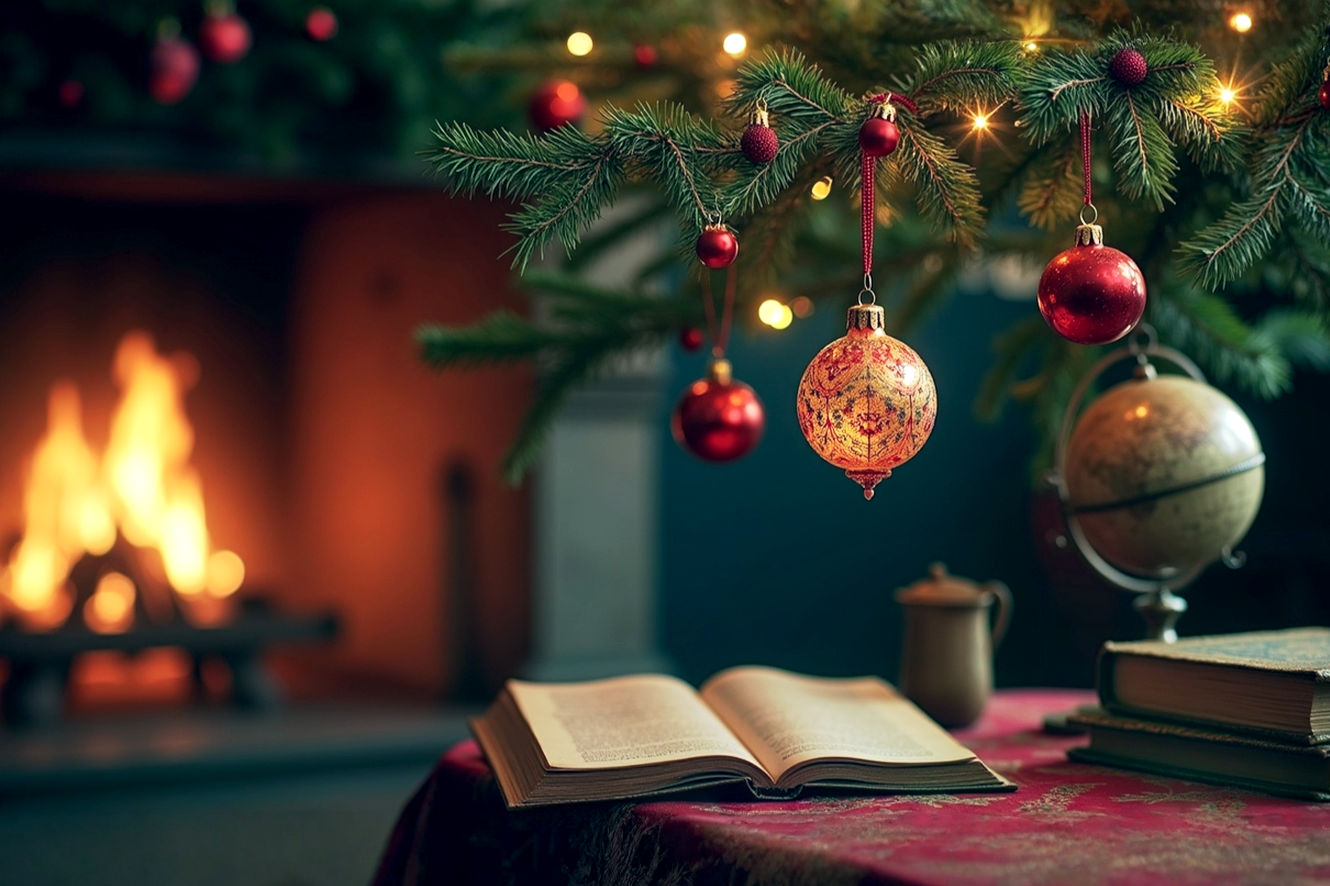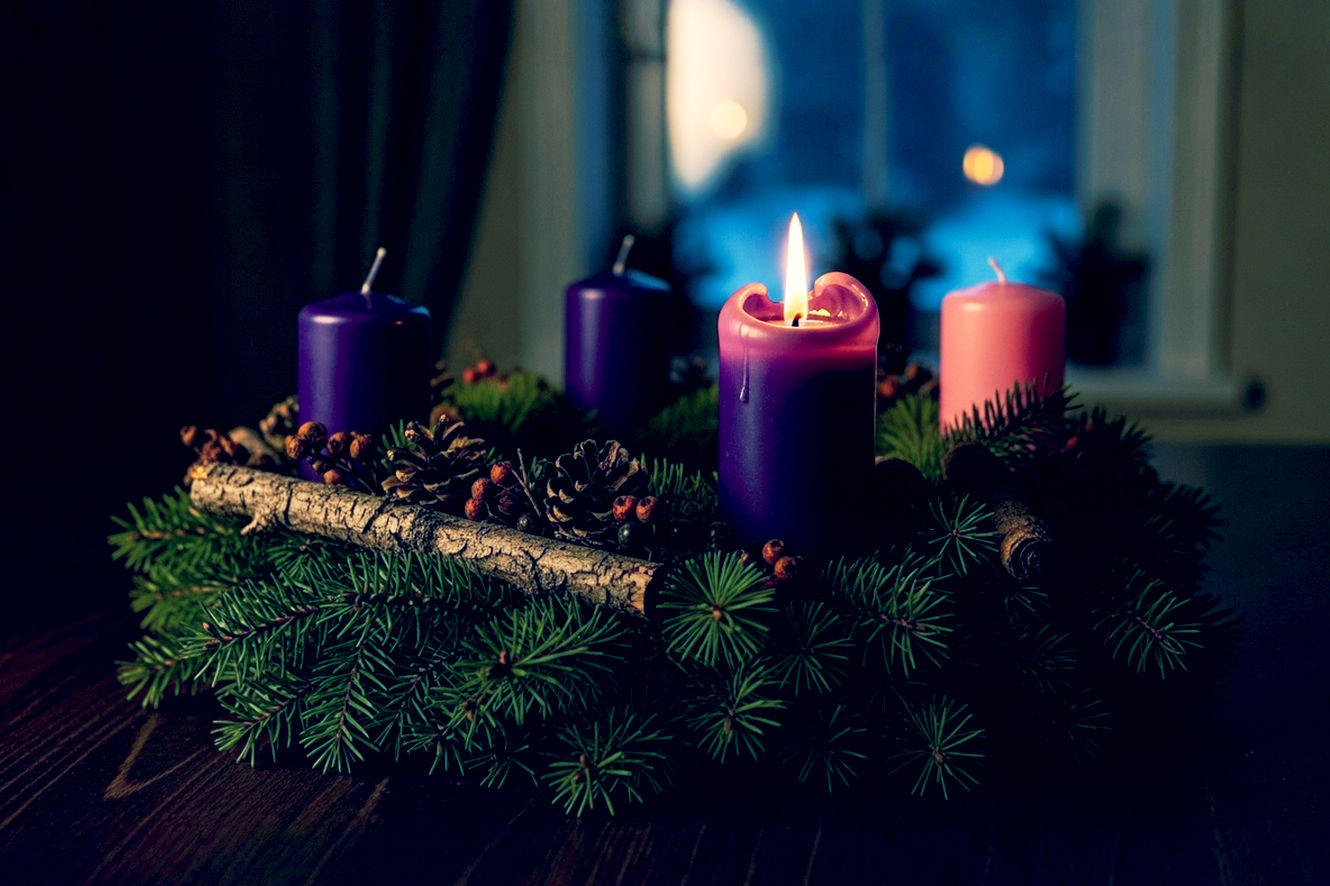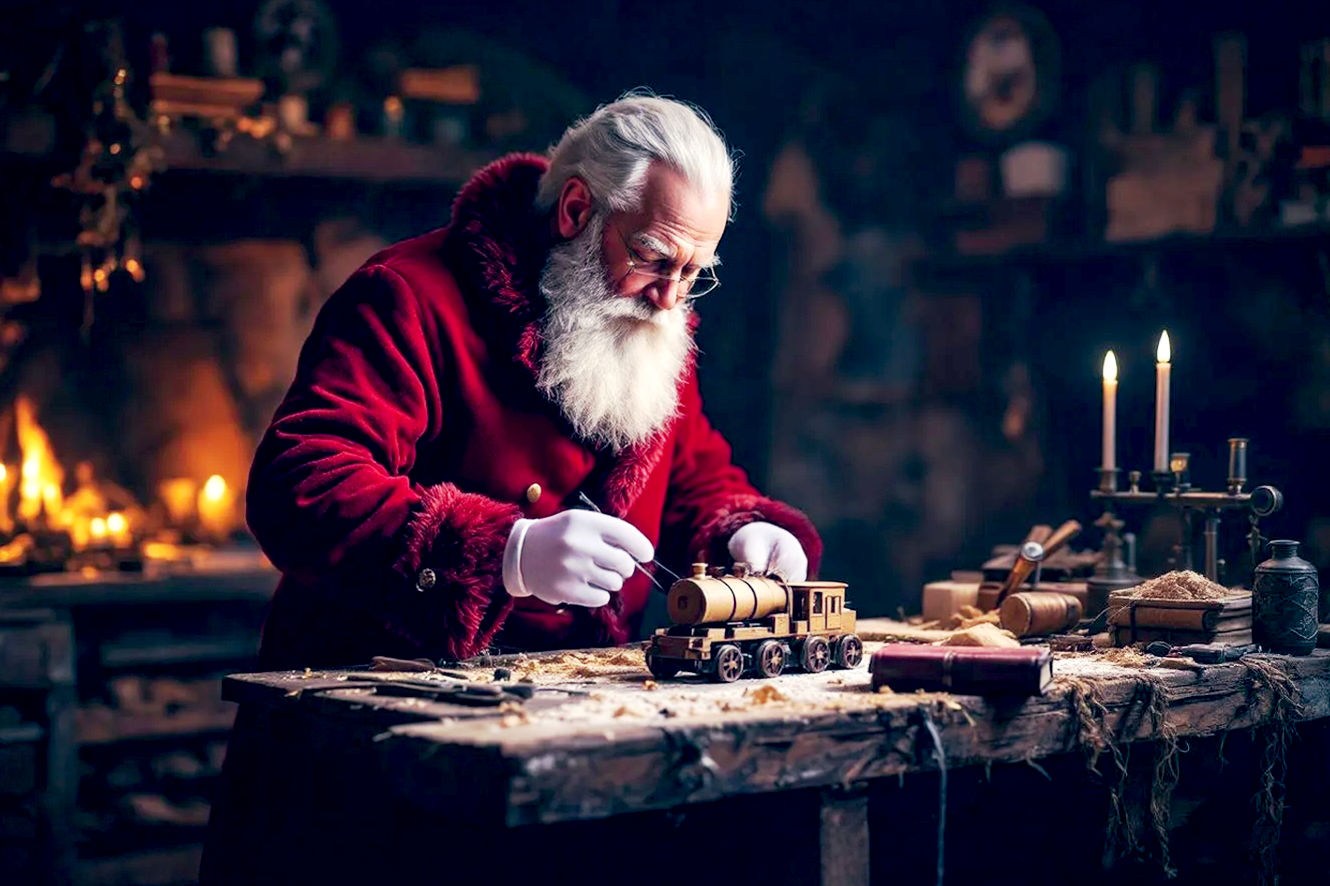This post may contain affiliate links. If you make a purchase through these links, we may earn a commission at no additional cost to you.
The air grows crisp, the nights lengthen, and a familiar sense of warmth and expectation begins to settle over much of the world. It’s a feeling that transcends simple changes in weather; it’s the arrival of the Yuletide season. For many, this time of year is synonymous with Christmas, a flurry of twinkling lights, festive music, and cherished time with family. But the story of Yuletide is far older, deeper, and more complex than a single holiday. It’s a rich tapestry woven from ancient pagan rituals, Christian theology, folk traditions, and modern commercialism, creating a season that is at once deeply personal and universally resonant.
To truly understand Yuletide is to journey back in time, to a world lit only by fire against the deep, intimidating dark of the winter solstice. It’s to trace the evolution of gods and saints, the blending of cultures, and the remarkable endurance of traditions that connect us to our ancestors. This is more than just the story of a holiday; it’s the story of how humanity has found light in the darkness, hope in the cold, and community in the heart of winter for millennia.
From the Norse sagas celebrating the god Odin to the Victorian-era inventions that defined modern Christmas, this guide will explore every facet of the Yuletide season, revealing the fascinating origins of the traditions we hold dear and the enduring magic that continues to capture our hearts year after year.
The Ancient Roots: Yule, Saturnalia, and the Winter Solstice
Long before the first Christmas carol was ever sung, ancient cultures across the Northern Hemisphere marked the winter solstice with profound reverence and elaborate celebration. Occurring around December 21st, the solstice is the shortest day and longest night of the year—a critical turning point when the sun begins its slow journey back, promising the eventual return of light and life. This celestial event was the bedrock upon which the earliest Yuletide traditions were built.
The Germanic and Norse Yule
The term “Yule” itself comes from the pre-Christian Germanic peoples of Northern Europe, including the Norse. For them, Jól (the Old Norse term for Yule) was a multi-day festival of immense importance. While historical records are fragmented, sagas and early accounts paint a picture of a festival centered on feasting, drinking, and sacrifice.
The central figure in many of these celebrations was the god Odin, who was sometimes known as Jólnir (the Yule one). He was believed to lead a spectral procession across the winter sky known as the Wild Hunt, a fearsome parade of ghosts, fairies, and other supernatural beings. Families would stay indoors, leaving out offerings of food and drink to appease the ghostly riders and ensure their own safety and prosperity for the coming year. This ancient, intimidating figure is believed by some historians to be a distant, shadowy precursor to the more benevolent figure of Santa Claus.
A key practice during Yule was the burning of the Yule log. A massive log, or even an entire tree, would be brought into the home and set ablaze in the hearth. It was meant to burn for the duration of the festival (often 12 days), its light and warmth symbolizing the triumph of light over darkness and providing a beacon of hope through the coldest part of winter. The ashes of the Yule log were considered to have magical properties, capable of protecting the home from lightning and evil spirits.
Roman Saturnalia: A Festival of Reversal
Meanwhile, in the Roman Empire, the period leading up to the winter solstice was marked by Saturnalia, one of the most popular festivals on the Roman calendar. Held in honor of the god Saturn, an agricultural deity, it was a week-long celebration of revelry, gift-giving, and social inversion.
For the duration of Saturnalia, all business and warfare were suspended. The rigid Roman social order was turned on its head; enslaved people were permitted to dine with their masters, sometimes even being served by them. A “King of Saturnalia” (Saturnalicius princeps) was chosen, often by lot, to preside over the festivities, issuing absurd commands and adding to the general chaos and merriment.
Key features of Saturnalia that echo in modern celebrations include:
- Gift-Giving: While grand presents were uncommon, Romans exchanged small, often humorous gifts called sigillaria, such as wax candles (cerei) and clay figurines.
- Feasting and Merriment: Public banquets and private parties were common, accompanied by gambling, music, and a general atmosphere of “eat, drink, and be merry.”
- Decorations: Homes and temples were decorated with evergreen wreaths and garlands, symbols of life’s persistence through the winter.
The spirit of Saturnalia—its emphasis on light, generosity, and the temporary suspension of everyday rules—created a cultural backdrop that would profoundly influence how the later Christian holiday of Christmas was celebrated.
The Christianization of a Pagan Season
The rise of Christianity across Europe presented a challenge: how to integrate deeply ingrained pagan traditions with the new faith. Rather than eradicating these ancient festivals, the early Church often adopted a strategy of syncretism, absorbing and reframing existing customs within a Christian context. The establishment of Christmas is the most prominent example of this process.
Why December 25th?
The Bible does not specify a date for the birth of Jesus. The choice of December 25th was a strategic one, likely made in the 4th century. Several theories explain this decision:
- Co-opting Pagan Festivals: The most widely accepted theory is that the Church chose this date to coincide with and eventually supplant major pagan festivals like Saturnalia and, more importantly, the Roman celebration of Dies Natalis Solis Invicti (the “Birthday of the Unconquered Sun”), which was celebrated on December 25th. By placing the birth of the “Son of God” on the same day as the rebirth of the physical sun, the Church created a powerful theological parallel.
- The Annunciation Theory: An older theory connects the date to the Annunciation (when the angel Gabriel told Mary she would conceive Jesus), which was fixed on March 25th. Calculating nine months forward from this date places the birth of Jesus squarely on December 25th.
Regardless of the precise reason, by the Middle Ages, Christmas had become a major religious feast day. However, the celebrations retained a distinctly “Yuletide” character, blending solemn religious observance with the boisterous, communal feasting of its pagan predecessors.
The Twelve Days of Christmas
The concept of a prolonged holiday season also carried over. The Twelve Days of Christmas, beginning on Christmas Day and ending on the Feast of the Epiphany (January 6th), became the primary period of celebration. This timeframe mirrored the length of the old Norse Yule festival. In medieval England, this was a time of continuous feasting, games, and revelry, presided over by a “Lord of Misrule”—a figure directly descended from the King of Saturnalia.
This period was the true heart of the medieval Yuletide. Work ceased, social hierarchies were relaxed, and communities came together to share in the festivities. It was a time of wassailing (singing and drinking to the health of neighbors and livestock), mumming (performing plays in costume), and extravagant feasts hosted by the wealthy for their entire communities.
The Evolution of Modern Yuletide Traditions
Many of the customs we now consider essential to Christmas are surprisingly recent inventions, products of the 19th and 20th centuries. The Victorian era, in particular, was a crucible of tradition, shaping a new, family-centric vision of the holiday that persists to this day.
The Christmas Tree: From Germany to the World
The practice of bringing decorated evergreen trees indoors originated in 16th-century Germany. Early trees were adorned with apples, nuts, and paper flowers. For centuries, it remained a largely German custom.
Its international popularity can be traced to a single image. In 1848, the Illustrated London News published an engraving of Queen Victoria, her German husband Prince Albert, and their children gathered around a decorated Christmas tree at Windsor Castle. Victoria was a beloved and influential monarch, and this depiction of a cozy, domestic Christmas instantly captured the public imagination in both Britain and the United States. Suddenly, the Christmas tree was transformed from a quaint foreign custom into an essential centerpiece of the holiday.
Early decorations were often homemade, but the Industrial Revolution soon made mass-produced ornaments, tinsel (originally made from real silver), and electric lights available to the masses, cementing the tree’s iconic status.
Santa Claus: The Man, the Myth, the Legend
The jolly, red-suited figure of Santa Claus is a fascinating amalgamation of historical figures, folklore, and clever marketing. His lineage can be traced to several key sources:
- Saint Nicholas: A 4th-century Christian bishop from Myra (in modern-day Turkey), Saint Nicholas was renowned for his piety and secret gift-giving. The most famous legend tells of him saving three poor sisters from being sold into servitude by dropping bags of gold down their chimney, which landed in stockings left to dry by the fire. His feast day, December 6th, is still a major day for gift-giving in many European countries.
- Father Christmas: In England, a medieval figure known as “Father Christmas” or “Old Christmas” personified the spirit of feasting and good cheer. He was typically depicted as a large, bearded man in green or scarlet robes, crowned with holly. He wasn’t associated with children or gifts but rather with adult merriment.
- Sinterklaas: Dutch settlers brought the legend of Sinterklaas (a Dutch variant of Saint Nicholas) to America. He was depicted as a tall, stately bishop who rode a white horse and was accompanied by a mischievous helper, Zwarte Piet (Black Peter).
The modern American Santa Claus was largely born in the 19th century. In 1823, the poem “A Visit from St. Nicholas” (more commonly known as “‘Twas the Night Before Christmas”), anonymously published but later attributed to Clement Clarke Moore, established many of Santa’s key characteristics: his sleigh, his eight reindeer (named for the first time), his magical ability to enter homes via the chimney, and his cheerful, elfin demeanor.
However, the definitive visual image of Santa was solidified in the 1930s by the artist Haddon Sundblom. Commissioned by The Coca-Cola Company for a series of holiday advertisements, Sundblom painted a warm, grandfatherly Santa with a booming laugh, rosy cheeks, and a bright red suit trimmed with white fur. This depiction was so effective and widely circulated that it became the universally recognized image of Santa Claus, eclipsing all previous versions.
Gift-Giving and the Rise of Commercialism
While gift-giving has ancient roots in Saturnalia and the legend of Saint Nicholas, its central role in modern Christmas is a product of the Industrial Revolution. For the first time, factories could produce a wide array of affordable toys, dolls, and other goods. Retailers quickly recognized the commercial potential of the holiday.
By the late 19th century, department stores began creating elaborate Christmas displays and “Santa’s Grottos” to attract families. Holiday-themed advertising became commonplace, transforming Christmas into a major economic engine. This shift moved the focus of gift-giving from the small, symbolic tokens of the past to the more substantial, commercially produced presents we know today. While many decry the commercialization of the season, it is now an inseparable part of how the Yuletide is experienced in much of the world.
Yuletide Celebrations Around the Globe
While the Anglo-American model of Christmas is globally influential, Yuletide traditions vary wonderfully from culture to culture, each reflecting a unique history and set of values.
Scandinavia: The Land of Light
In Scandinavia, where the winter darkness is most profound, the theme of light is paramount.
- St. Lucia’s Day (December 13th): This festival of lights is particularly important in Sweden. Young girls, dressed in white gowns with red sashes, lead processions, with one chosen to portray St. Lucia, wearing a crown of lit candles on her head. They serve coffee and traditional saffron buns (lussekatter).
- Julebord: In Norway and Sweden, companies and families host a Julebord (Yule table), a massive holiday buffet featuring traditional dishes like pickled herring, cured salmon, ham, and meatballs.
- Nisse/Tomte: Instead of elves, Scandinavian folklore features the Nisse (in Norway and Denmark) or Tomte (in Sweden), small, gnome-like creatures with long white beards and red caps who are believed to protect the farmstead. Children leave out a bowl of porridge with butter for them on Christmas Eve to ensure they remain helpful.
Germany and Austria: Christmas Markets and Krampus
Germany is the heartland of many beloved Christmas traditions. Its Christkindlesmärkte (Christmas markets) are world-famous, dating back to the late Middle Ages. Stalls sell handcrafted goods, ornaments, and festive treats like Glühwein (mulled wine), Lebkuchen (gingerbread), and roasted chestnuts.
In contrast to the gentle spirit of St. Nicholas, parts of Austria, Germany, and other Alpine regions have a much darker figure in their folklore: the Krampus. A fearsome, horned, demonic creature, Krampus is said to accompany St. Nicholas on his rounds. While St. Nicholas rewards the good children, Krampus punishes the naughty ones, sometimes stuffing them in his sack to carry them away. On Krampusnacht (December 5th), young men dress up as the creature and parade through the streets, playfully frightening onlookers.
The United Kingdom: Boxing Day and Pantomimes
In the UK, the day after Christmas, December 26th, is a public holiday known as Boxing Day. Its origins are debated, but the most common theory is that it was the day when the upper classes would give their servants boxes containing gifts, money, and leftover food as a thank you for their work on Christmas Day. Today, it’s primarily associated with major sporting events (especially football) and massive retail sales.
The British holiday season is also characterized by the pantomime, a uniquely theatrical tradition. These are comical musical plays based on classic fairy tales, featuring audience participation, slapstick humor, and men dressed as women (the “pantomime dame”) and women playing the lead male role.
Latin America: Nochebuena and Las Posadas
In many Latin American countries, the most important celebration takes place on Christmas Eve, known as Nochebuena (the Good Night). Families gather for a large, festive dinner, which is often followed by attending a midnight Mass (Misa de Gallo).
In Mexico and parts of Central America, the nine days leading up to Christmas are marked by Las Posadas. This tradition reenacts Mary and Joseph’s search for an inn (posada) in Bethlehem. Each night, a procession of neighbors goes from house to house, singing songs and asking for shelter. They are repeatedly “turned away” until they reach the designated host house, where they are finally welcomed in for a celebration with food, music, and piñatas.
The Symbols and Flavors of the Season
The Yuletide season is rich with symbolism, with every decoration, food, and plant carrying layers of meaning inherited from centuries of tradition.
The Meaning of Evergreens
Holly, ivy, mistletoe, and fir trees have been used as decorations during winter for thousands of years. As evergreens, they don’t die back in the winter, making them powerful symbols of eternal life, perseverance, and the promise of spring’s return. In a Christian context, the prickly leaves of holly came to represent the crown of thorns, and its red berries the blood of Christ.
Mistletoe holds a particularly unique place in folklore. For the Druids, it was a sacred plant believed to possess healing powers and promote fertility. The Norse associated it with Frigg, the goddess of love. The custom of kissing under the mistletoe is thought to be a remnant of these ancient fertility rites, softened into a playful holiday tradition by the Victorians.
The Foods of Yuletide
Feasting has always been central to winter solstice celebrations, a way to enjoy the fruits of the harvest and build up strength for the cold months ahead. Many traditional holiday foods have symbolic or historical significance.
- Christmas Pudding: Also known as plum pudding, this dense, rich, steamed cake is a British staple. Traditionally made with 13 ingredients (representing Christ and the 12 apostles), it is prepared weeks in advance and often contains a coin or charm, bringing good luck to whoever finds it.
- Gingerbread: Spices like ginger, cinnamon, and cloves were expensive luxuries in the Middle Ages, making gingerbread a special treat reserved for holidays. The tradition of making gingerbread houses was popularized by the Brothers Grimm’s fairy tale “Hansel and Gretel.”
- Eggnog: This creamy, spiced beverage likely evolved from “posset,” a medieval European drink of hot milk curdled with wine or ale. The addition of eggs and expensive spirits like brandy and sherry made it a drink for the wealthy, perfect for toasting to prosperity and good health during the holidays.
The Enduring Power of Yuletide
In our modern, largely secular world, the Yuletide season continues to hold a powerful grip on our collective imagination. For some, it remains a deeply religious observance, a celebration of the birth of a savior. For others, it is a cultural festival, a time for family, nostalgia, and goodwill. And for many, it is a blend of both.
What began as a fearful watch through the longest night of the year has transformed into a season of light, generosity, and hope. The Yule log has become the twinkling lights on a Christmas tree; the offerings to ancient gods have become gifts exchanged between loved ones; the raucous feasts of Saturnalia have become cherished family dinners.
The enduring magic of Yuletide lies in its remarkable adaptability. It has absorbed and repurposed the traditions of countless cultures and eras, creating a celebration that is constantly evolving yet always connected to its ancient roots. It reminds us of the fundamental human need for community, for light in the darkness, and for a moment of peace and cheer in the heart of winter. Whether you call it Yule, Christmas, or simply the holiday season, its spirit of connection and renewal remains as vital today as it was thousands of years ago.






